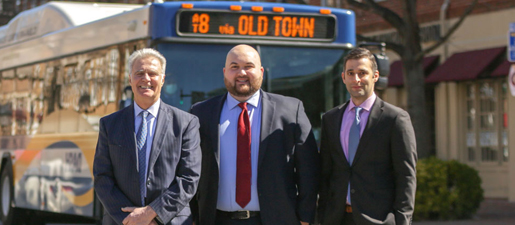
Just because you have a vital safety device doesn’t mean you always use it. Such was the case with the seat belt. Car manufacturers used to make seat belts an optional feature. In 1968, a federal law was passed that required all vehicles to be equipped with seat belts as standard.
The challenge then was to get people to use seat belts.
Despite numerous campaigns encouraging seat belt use, people didn’t seem to get the message. One by one, states began enacting laws to mandate seat belt use. Virginia passed its first version of the law in 1988, which required the driver and passenger in the front seats to wear seat belts.
On July 1st, 2025, the law was expanded to include all passengers in the front and back, who must wear a seat belt, and children under eight must be in a rear-facing safety seat. Unfortunately, even with the law in place, some drivers and passengers still fail to buckle up.
That increases the risk of incurring serious injury in a car accident. If you know someone who refuses to wear a seat belt, consider sharing the following benefits:
Reduces Risk of Injury and Death
Seat belts are designed to restrain a driver or passenger if the car comes to a sudden stop or gets involved in a collision. At the moment of impact, the seat belt engages, holding the occupant in place and distributing the force of the impact across the body.
According to data collected by the Centers for Disease Control and Prevention (CDC), seat belt use reduces the occurrence of serious injury or death by half.
Protects from Ejection
In certain crashes, the force of the collision can forcibly eject the occupant from the car. With a seat belt in use, it can prevent you from being thrown from the vehicle. That can further reduce the risk of severe injuries.
Restraint Through Secondary Collisions
A vehicle that crashes into your car is the primary impact. The force of the collision can push the car into another vehicle or a guardrail. Seat belts can maintain beneficial restraints during a secondary collision. That can help reduce the risk of spinal cord injury, like whiplash.
Improves Airbag Effectiveness
Like seat belts, airbags are a crucial safety feature for riders in a car. Airbags deploy at the moment of impact and work in conjunction with seat belts by keeping you in the optimal position to benefit from the airbag deployment.
Minimizes Legal Consequences
When another driver’s negligence causes that accident, you’re entitled to seek compensation for your losses even if you weren’t wearing a seat belt.
However, Virginia law uses a contributory negligence system. That means if you are found to be slightly at fault for the accident, you can’t recover any damages. If the other driver can prove you weren’t wearing seat belts, they could argue that the injuries you sustained could have been prevented, and they might be correct.
Sets a Good Example
Whether you’re a driver or a parent, when you buckle up, you set a positive example for everyone else in the car. That is especially true with young riders. When they see you buckle up first, they’ll take the hint and hopefully maintain that habit for the rest of their lives.
Why Don’t People Wear Seat Belts?
There are many common reasons why people don’t wear seat belts. They think it’s not essential because they’re just going on a short trip. They might also think that airbags will keep them safe in the event of an accident.
In Virginia, a trip along rural roads might make them feel safer because there is not as much traffic. There is also that sense of feeling “invincible” that is mainly attributed to young guys.
None of these is a good reason. You’d be wise to point out that car accidents happen anywhere and at any time.
You should also know that help is available if you are involved in an accident caused by another driver. The attorneys at Curcio Law have helped numerous clients take on major insurance carriers to secure the maximum benefits they are entitled to.
Our support begins with a free consultation to discuss the accident.
Call to schedule your talk today.

